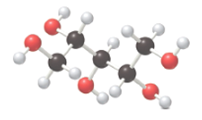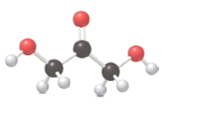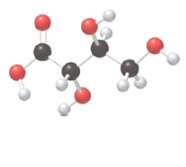
Concept explainers
(a)
Interpretation:
The following compound must be labeled as a monosaccharide, aldonic acid or an alditol:

Concept introduction:
Monosaccharides are also called simple sugars, contain
(b)
Interpretation:
The following compound must be labeled as a monosaccharide, aldonic acid or an alditol:

Concept introduction:
Monosaccharides are also called simple sugars, contain aldehyde or ketone groups and many hydroxyl groups. Aldonic acids contain many hydroxyl groups and an acid group. Alditol are polyols which contain many hydroxyl groups.
(c)
Interpretation:
The following compound must be labeled as a monosaccharide, aldonic acid or an alditol:

Concept introduction:
Monosaccharides are also called simple sugars, contain aldehyde or ketone groups and many hydroxyl groups. Aldonic acids contain many hydroxyl groups and an acid group. Alditol are polyols which contain many hydroxyl groups.
Want to see the full answer?
Check out a sample textbook solution
Chapter 20 Solutions
General, Organic, and Biological Chemistry - 4th edition
- Which one is b-D glucose and which one is a-L glucose ? 2. Which one is b-fructose and which a-L fructose?arrow_forwarda. How many stereogenic centers are present in α-D-galactose? b. Label the hemiacetal carbon in α-D-galactose. c. Draw the structure of β-D-galactose. d. Draw the structure of the polyhydroxy aldehyde that cyclizes to α- and β-D-galactose.arrow_forwardClassify the following monosaccharide. a. alpha pyranose b. alpha furanose c. beta pyranose d. deoxy pyranose e. beta furanosearrow_forward
- Convert each cyclic monosaccharide to its acyclic form.arrow_forwardAnswer the following question about monosaccharide A. What product is formed when A undergoes a Wohl degradation?arrow_forwarda) Draw Haworth projections of both - and -anomers of D-fructose. Indicate which carbon is the anomeric carbon.b) Sucrose is a disaccharide made up of a molecule of D-fructose and D-glucose. Draw the structure of sucrose clearly indicating the linkage between the two monosaccharides and its biological significance.c) Tollen’s reagent is a very mild oxidizing agent which normally oxidize aldehydes but not ketones. However, both glucose and fructose give positive results with Tollen’s reagent and are classified as reducing sugars. Explain how fructose can also give positive results with Tollen’s reagent (illustrate using structures).arrow_forward
- Draw a structure of a monosaccharide, disaccharide, and polysaccharide. Label.arrow_forwardDraw a Haworth project of a common cyclic form of this monosaccharide:arrow_forward(a) Draw the more stable chair form of fucose, an essential monosaccharide needed in the diet and a component of carbohydrates on mammalian and plant cell surfaces. (b) Classify fucose as a D- or Lmonosaccharide. (c) What two structural features are unusual in fucose?arrow_forward
- Assign a name to each monosaccharide (Include if it's an alpha or beta and if it's a D or L)arrow_forwardDraw the structure of: (a) a polysaccharide formed by joining D-mannose units in 1→4-β- glycosidic linkages; (b) a polysaccharide formed by joining D-glucose units in 1→6-α- glycosidic linkages. The polysaccharide in (b) is dextran, a component of dental plaque.arrow_forward(A) Is the trisaccharide a reducing sugar? (B) Identify the type of glycosidic linkage of the colored bond.arrow_forward
 Chemistry for Today: General, Organic, and Bioche...ChemistryISBN:9781305960060Author:Spencer L. Seager, Michael R. Slabaugh, Maren S. HansenPublisher:Cengage Learning
Chemistry for Today: General, Organic, and Bioche...ChemistryISBN:9781305960060Author:Spencer L. Seager, Michael R. Slabaugh, Maren S. HansenPublisher:Cengage Learning
